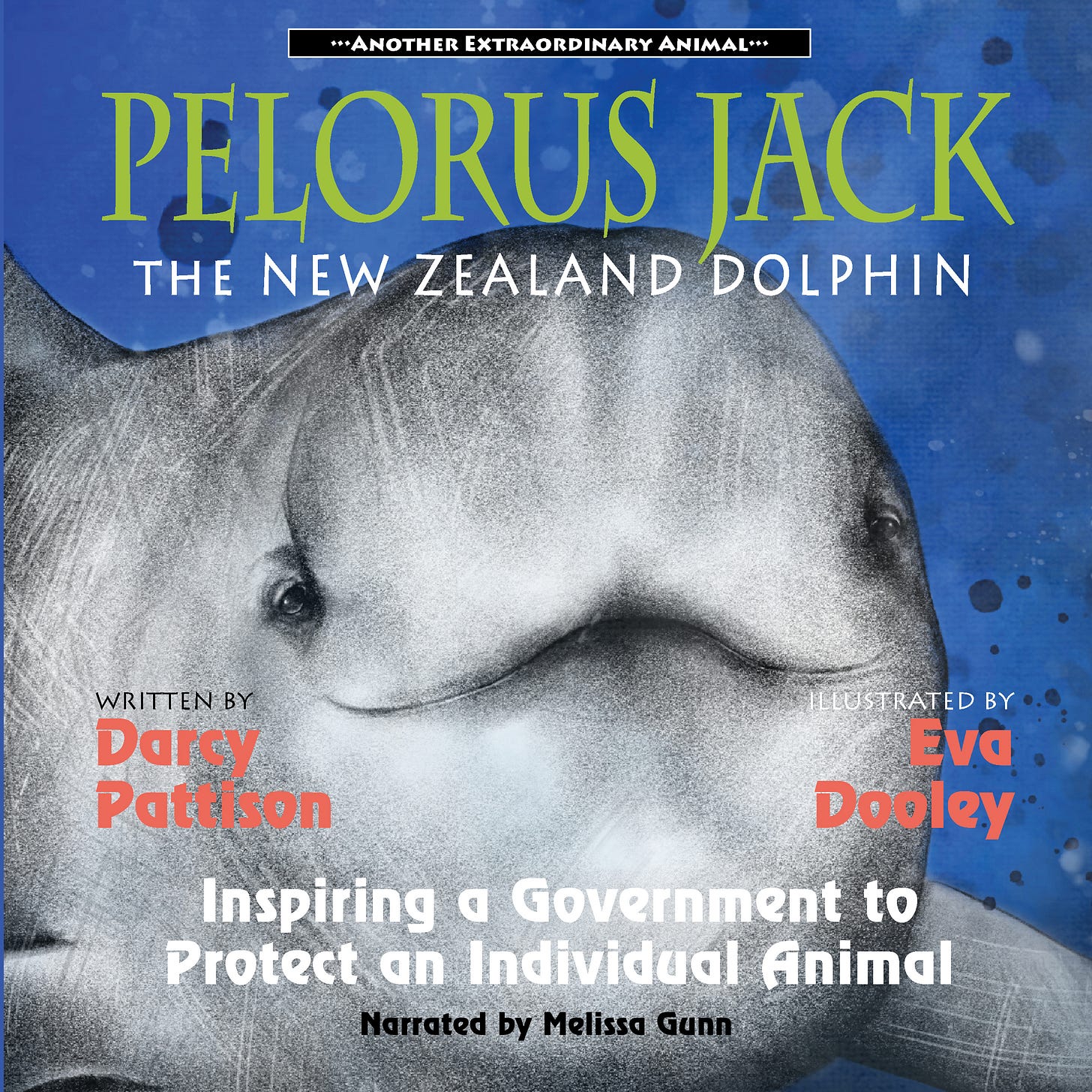Children's Audiobooks
A Limited but Growing Market
I’ve not written a lot about audiobooks for children because it’s not a big market for us. But ElevenLabs announced this week that they are opening a new platform for authors to create AI-generated audiobooks. So, I wanted to cover the possibilities for children’s audiobooks.
When to Add Audiobook Formats for Your Children’s Books
Once you establish sales for print and ebooks, you may be interested in audiobook sales. While the audiobook market for adult titles has grown tremendously, it’s a slower growth for children’s audio. One reason is the pricing structure on platforms such as Audible. They use credits and then assign credit values to audiobooks. For example, a fantasy novel might include 14 hours of audio, while a children’s short chapter novel might include 2 hours of audio. Yet, they both cost “1 credit.” The longer fantasy novel is perceived as a better value. And when you try for a 15-minute picture book narration, the market disappears. Still, there are bright spots here and there.
For my picture books, I do create audiobooks because the eBook platforms will use the audio to create read-to-me or other similar formats. For a read-to-me format, each word is highlighted on the screen as it is spoken aloud. Kids can track the text as it’s read, which some studies suggest will help them learn to read. Or, for kids who struggle to read, it’s still a way to gain experience with the written word by adding the audio component. Not all platforms use read-to-me, but if you work with a platform that does, this format sells well for my books. Since the picture books are short, the cost is less than $100, which is easier to earn back.
For longer novels, I seldom do audiobooks because the cost has been prohibitive. Audiobook narrators earn $50-$400 per finished hour, but great narrators will go higher. A finished-hour of audio means all the editing has been done and the audio is ready to upload and sell. An hour of narration could be 8000-10,000 words, depending on the narrator. If you have a 50,000 word novel, then it would be 4-6 hours of finished audio. At $400/hour of finished audio, that’s $1600–2400. The question is can you earn that much from a children’s novel in audiobook format? For most, the answer has been, No.
Audiobook Narrators
Creating audiobooks means hiring someone to narrate the book, that is, read and record it and provide appropriate files. This means you’ll need to provide them with a contract for their services. Most narrators use Audacity to edit files, which has a plugin for Audible (Amazon’s audiobook platform) standards. In the contract, I ask them to comply with the current Audible requirements for audio quality, a standard that is generally accepted across the industry. If you choose to record your own books, be sure you can also meet those standards.
See the full standards here: https://help.acx.com/s/article/what-are-the-acx-audio-submission-requirements
Finding narrators is tricky. There are companies who provide platforms for narrators to connect with authors, but they usually require you to process the contract on their platform. I’ve found that just asking friends for recommendations is as reliable as any other method.
I particularly like when I can find a perfect narrator. For example, ABAYOMI, THE BRAZILIAN PUMA is narrated by David DeSantos, a native of South America. While not specifically from Brazil, his accent was perfect for this story. Listen to this sample:
PELORUS JACK, THE NEW ZEALAND DOLPHIN is narrated by Melissa Gunn, who is a native New Zealander. Listen to this sample:
The addition of voices specific to a geographical region add to the charm of these audiobooks.
AI-Narration
The use of Artificial Intelligence, AI, has been a controversy sweeping through the publishing industry throughout the mid-2020s. I won’t debate the pros and cons of it here. Instead, I’ll explain what’s now available in the audiobook format and let you decide on the best path for your publishing company.
This week, ElevenLabs changed the face of AI-generated audiobooks by making it easy for the average person to create such audiobooks. On ElevenLabs’ audiobook platform, you can choose from a variety of voices, or create a custom voice, including a clone of your own voice. Audiobooks can be accessed on the ElevenLabsReader app, or download the files to make them available on other platforms, too. Most platforms plan to clearly label that these are AI-generated files so the listener will know what they are getting.
The real advantage will be cost. Accounts at ElevenLabsReader will be much lower priced than hiring an individual narrator, making audiobooks available to many more authors. There’s still the problem of the customer’s perceived value for the shorter children’s books, so costs may be low, but income may stay low, too. On ElevenLabsReader, you need the listener to listen to 11 minutes before it counts as a read and you’re paid.
Other platforms also allow you to create AI-narrated audiobooks, such as GooglePlay and AppleBooks. GooglePlay allows you to download the files and use in other places, but AppleBooks remain only on their platform. With this new player in the audiobook arena, I expect most platforms will offer AI-generated audiobooks in the near future.
Check your preferred platform to see their policies on AI-narrated audiobooks.
SELLING AUDIOBOOKS
While there’s now a long list of platforms that sell audiobooks, the problem is that few have an audience for children’s books. If you decide to go forward with an audiobook, I have a few words of advice. First, I suggest that you keep an eye on many platforms, but concentrate on a few. Read the Terms of Service and Payment Schedules carefully as there are many ins and outs to the payment schedules. If you choose AI-generated files, prepare a disclosure statement for customers.
EPIC! App. This eBook app also provides audiobooks, and they add audio to an ebook to create the popular read-to-me format. The read-to-me formats are consistently my most popular titles.

Findaway/Spotify. Spotify for Authors allows access to this huge, international market. Sadly, it’s not been popular for my books.
Overdrive. If you go direct to Overdrive with ebooks, then it’s an easy choice to add audiobooks here. It’s one of the few places where I consistently get audiobook sales.
These platforms also provide audiobook sales that you can investigate: ACX - Amazon, Apple Books, AuthorRepublic, Chirp, GooglePlay, Kobo, Librivox, Scribd, Storytel, and others.
YOUTUBE/Podcasts. Authors of adult books have created a demand for audiobooks on YouTube or through limited season podcasts. The idea is to create videos with your audio book as the sound track and just a single image or a series of repeating images for the video track. To earn money, they rely on YouTube’s advertising policies. You must first gain a certain number of followers and have a certain level of hours played. Check YouTube policies for the current requirements to monetize your channel. One idea is to call the audiobooks a podcast. If you have a book series, each book in the series is a different season.
AUDIO-FIRST OR AUDIO-ONLY. In a reaction to kids reading on or otherwise using computers, there are a couple products that promote “No Screens.” The Yoto Player platform and the Tonies platform are both audio-first or audio-only ways for kids to consume books, podcasts, news, and so on.
The Tonie is a unique audio player that allows customers to purchase a variety of separate audio recordings. They use a plastic character to represent each audio selection. The character is placed on the Tonie devise, which triggers the audio. Those characters are expensive to create, so they need lots of sales, which means they rely on branded characters such as Disney characters. Also, they need about an hour of content, so picture books rarely work, but chapter books are too long. It’s possible to add music or sing-alongs to round out the length. However, it’s not a great fit for most authors.
Yoto players, from a British company, are also a unique audio player, but they rely on less expensive cards to trigger the audio. Or, the cards can be a digital card, which makes it even more accessible. In late 2024, they opened a creator market to selected people, allowing audio creators to publish a wide variety of materials on their platform. As I write this, I have one audiobook on the platform and it has some sales. They are still in a learning and development phase, but keep an eye on their progress and for when they open to a wider creator community.
Audiobook Files
For audiobooks, you need these files. File names are always ISBN numbers.
Audiobook cover files are always a square format, 2400px by 2400 px, jpeg format, less than 5MB.
Audio recordings of the story as .mp4 files, following the specifications discussed above. I usually have an Opening, Main Story and Closing files, numbered as ISBN-1.mp4, ISBN-2.mp4, and ISBN-3.mpr. For novels, you’ll number chapter sequentially, too.
Metadata. Most platforms require a spreadsheet for metadata, that will include the narrator’s name. Some platforms also want to know the run time of the audiobook expressed a hours:minutes:seconds. For example, an audiobook that is 1 hour, 26 minutes and 14 seconds long would be 1:26:14 in length.
In the end, you’ll have to decide if the audiobook format is worth the time-investment for your books.




@darcy - this is a super helpful article. Question about read-to-me/read-along formats. How does this process work? Do you have to prep the files specifically for this format prior to upload (eg insert audio into a fixed format epub file), or does the app do it for you if you provide both audio and epub files? And if the former, are you doing this yourself or do you hire it out. I've been researching and it feels fairly onerous to try to figure it out myself...
Thanks, appreciate the candid feedback.